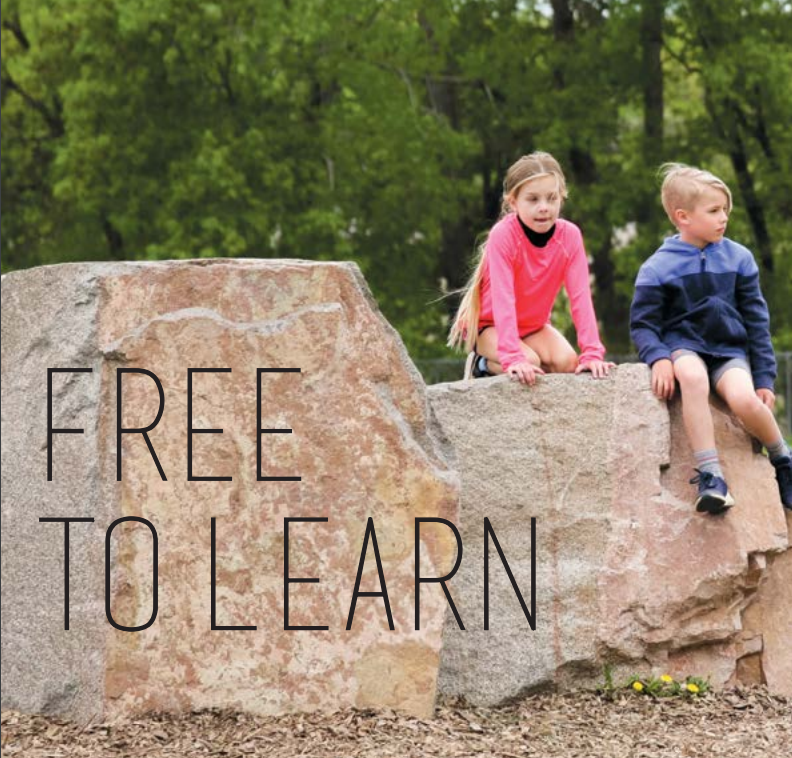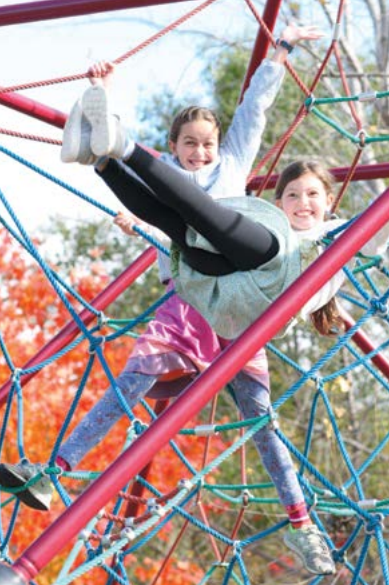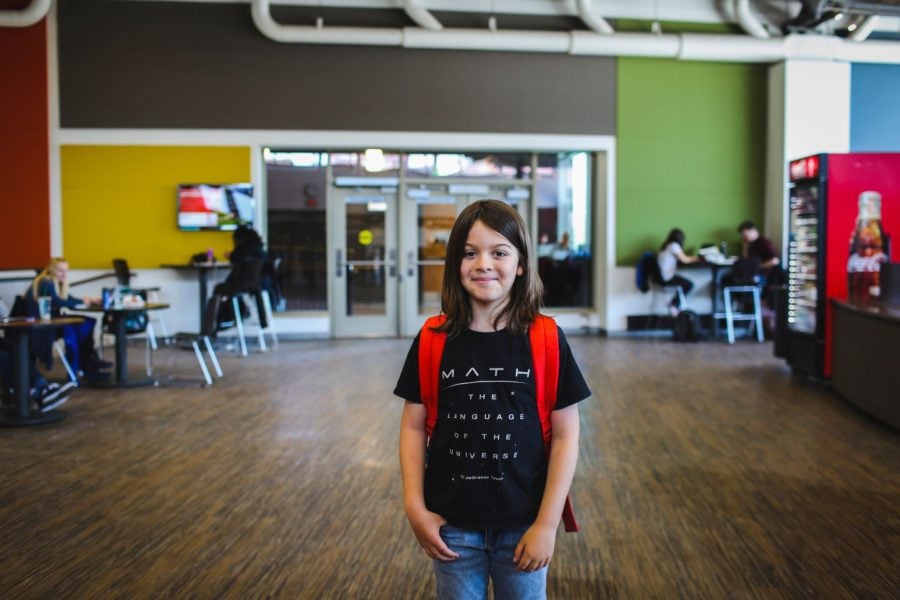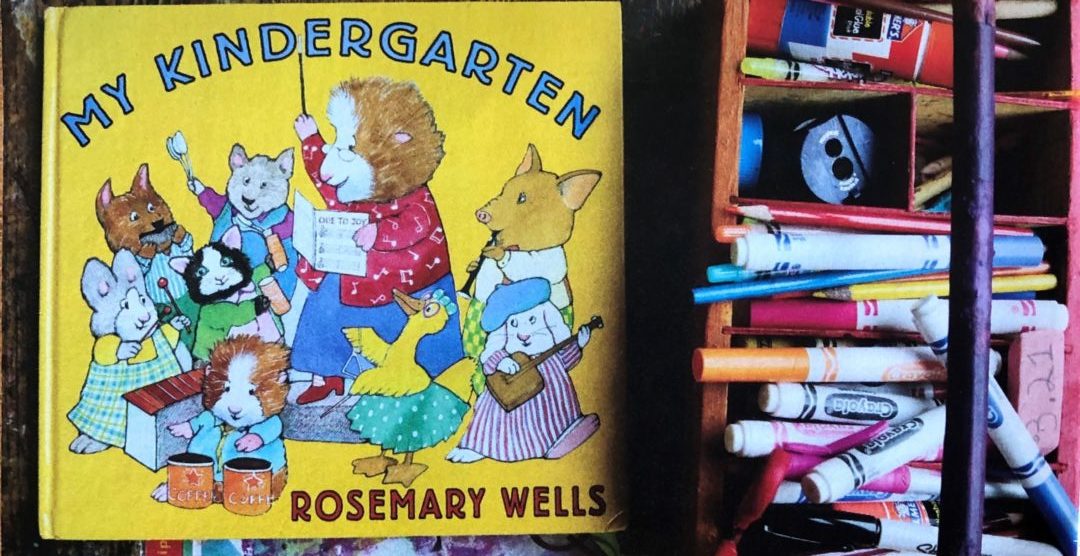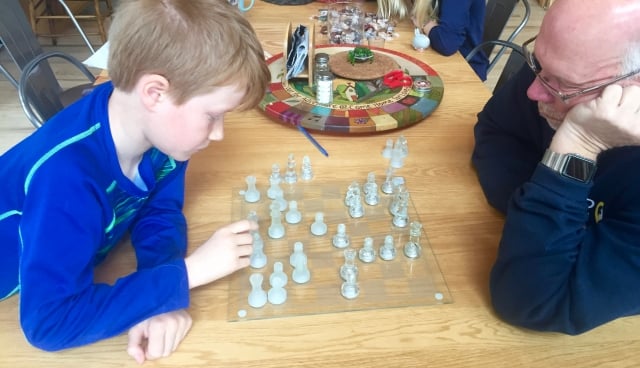The Minnesota Waldorf School in Roseville emphasizes social-emotional development and a connection to the natural world.
On an expansive 8-acre campus tucked away in Roseville, sits the Minnesota Waldorf School, a private K-8 school serving families across the Twin Cities.
A couple of chickens roam freely next to a coop near the school. Nearby, an eighth-grade class spreads across a giant grassy field where several massive, black, hotdog-shaped balloons soar high overhead.
“Right now, we’re studying meteorology and weather,” said teacher Kirsten Riehle, “and these are solar balloons. They show how hot air rises.”
Students run beneath the balloons, which they made using black plastic garbage bags, and laugh in wonder at the results of their experiment.
“I think it’s cool that it can rise with the heat,” said Haley Olson, a student in Riehle’s class, “This is very active learning.”
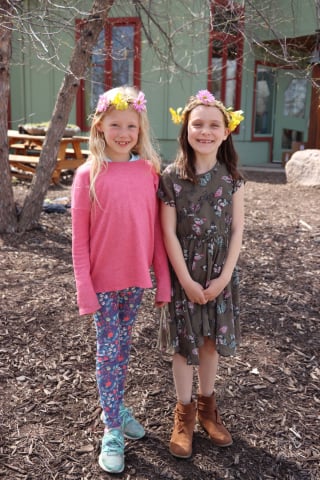
Immersed in nature
Outdoor learning happens regularly at the Minnesota Waldorf School, which currently has a K–8 enrollment of 136.
When the Minnesota Waldorf School moved to its current location in 2001, it was intentionally designed so the buildings would sit in harmony with the land — 8 acres in all. With classrooms that boast impressive picture windows overlooking natural spaces, children are immersed in nature, even when they’re indoors.
Cate Cooney of Minneapolis, who has two children at the school, said that’s one of the things she appreciates most.
“They do a lot of recess, but they also [go outside] for movement and other things,” she said. “When we first came, I saw a teacher taking the class out to look at the moon because they were studying astronomy and moon phases. With smaller class sizes and buildings that are structured to have access to the outdoors, it’s easy to take those opportunities.”
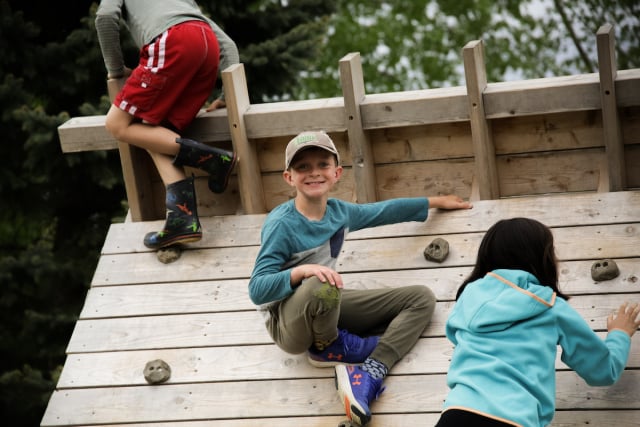
What is Waldorf?
The Waldorf model was developed 100 years ago in Germany after World War I based on Austrian philosopher Rudolph Steiner’s insight into the nature of the developing child. Defining features of a Waldorf education include a curriculum that integrates art, music and movement into daily learning; an emphasis on social-emotional development at all ages; story-based teaching methods; and learning in harmony with nature.
Waldorf kindergartens are mixed-age and include ages 3-6 in the same class.
In the elementary program, teachers stay with the same class of students from first through eighth grade and have a lot of autonomy when it comes to what and how they teach. This autonomy allows them to mold the curriculum to suit the individual and group needs of the students over time.
Lacey Griffin, the school’s enrollment and outreach director, said that most families who choose the Minnesota Waldorf School are looking for an education that allows for more space and time for imaginative and creative play, with an emphasis on social-emotional development before academics, and that emphasizes an experiential, individualized and wholistic approach to learning.
When we first came, I saw a teacher taking the class out to look at the moon because they were studying astronomy and moon phases. With smaller class sizes and buildings that are structured to have access to the outdoors, it’s easy to take those opportunities. — Cate Cooney of Minneapolis, mother of two students at the Minnesota Waldorf School
Griffin, who has two boys at the school, appreciates the nurturing, age-appropriate environment.
“I believe, at my very core, that the lives of children are not meant to be sped up,” she said. “They are meant to be lived in the moment, enjoying the wonder of the world around them.”
The first Waldorf school was an experimental public school serving the children of workers at the Waldorf-Astoria cigarette factory. Today, worldwide, there are more than 1,100 Waldorf schools and almost 2,000 Waldorf kindergartens, according to the International Forum for Steiner/Waldorf Education.
The Minnesota Waldorf School grew out of a parent-led movement for Waldorf education in the Twin Cities. The Minnesota Waldorf School Association was created in 1979. The first kindergarten program opened in September of 1981.
By 1986, there were 100 students in five grades and two kindergartens. In 1987, the decision was made to separate into to two Waldorf initiatives — the City of Lakes Waldorf School, which is just south of downtown Minneapolis and the Minnesota Waldorf School in Roseville.
This year, in honor of the 100 year anniversary of Waldorf education, The International Forum for Steiner/Waldorf Education is promoting a global initiative across all Waldorf schools to respond to the declining bee population by engaging students in projects that directly promote bee health. Learn more at waldorf-100.org/en/project/bees-trees.
This past summer, the Minnesota Waldorf School sent the school’s movement and woodworking teacher to a pollinator workshop to inspire bee programming at the school for students, families and the public, including how to grow pollinator gardens at home.
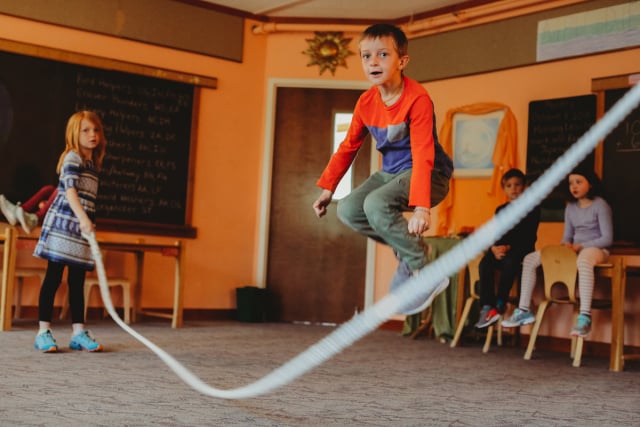
Academics, the Waldorf way
In Waldorf lingo, the introduction to academics is referred to as a “blossoming” or “unfolding,” in which the children come into the learning whenever they’re ready to receive it. This approach aims to respect each child’s individual readiness and carves out space for students who might be ready to read at age 4 as well as those who might not get there until, say, third grade.
Unless teachers detect barriers to learning — that require extra support and assessment — children are allowed time and space to learn the way that works for them.
Skeptics of the Waldorf model sometimes say it lacks enough emphasis on academic work, but that’s a misconception, said Vaara Ostrin, whose two children attend the school.
“We have a curriculum structure that allows for different learning arcs, different learning speeds, different learning styles,” Ostrin said.
While it’s true that children begin learning letters and numbers in first grade rather than in kindergarten, like most mainstream students, Ostrin said the school focuses on giving kids a strong foundation in physical and social-emotional development first to prepare them for later academic work.
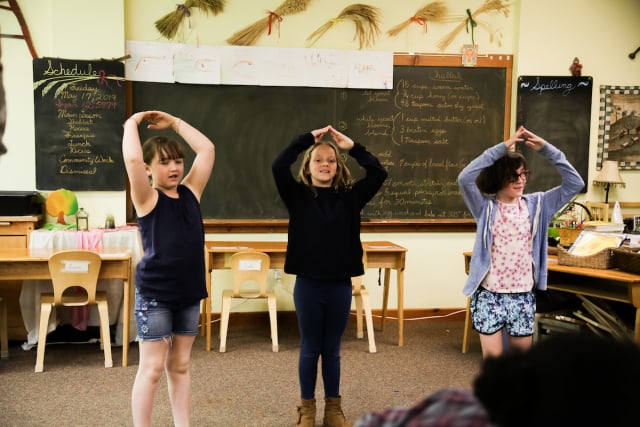
Low Tech classrooms
Perhaps one of the most notable differences between a mainstream classroom and a classroom at the Minnesota Waldorf School is the absence of technology.
Instead the emphasis is put on face-to-face learning experiences through teachers as well as peers.
While there aren’t any rules about tech use at home, most families who attend share similar values around technology and limit screen use at home, too.
But that doesn’t mean the school discounts the role of technology in the modern world. For example, cyber civics is a common component of the sixth-grade curriculum, in which students learn about ethical behavior online.
In eighth grade, many teachers include a computer tear down and rebuild as part of the humanities curriculum along with some background in coding languages. Several students at the school even have their own YouTube channels and podcasts.
Cooney, whose seventh-grader studied cyber civics last year, said she’s been impressed by the school’s ability to evolve with the times.
“Whether you are a family that’s decided to wait to let your kids have access or not, that’s really responsive,” she said.
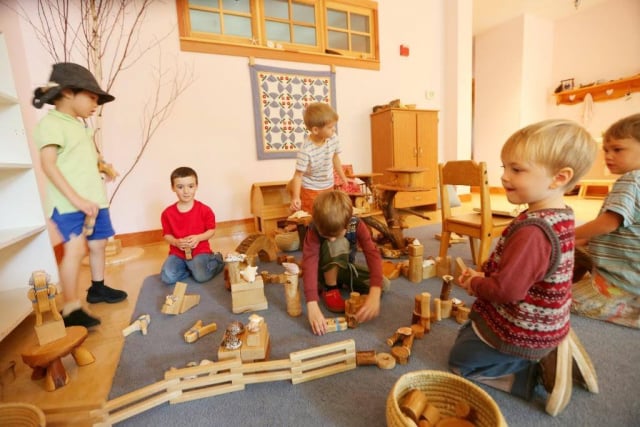
Play-based kindergarten
For its youngest students, the school has a special building referred to as the Early Childhood Cottage, established in 2009. It houses three mixed-age kindergartens, in which children ages 3 to 6 play and work together, plus first- and second-grade classrooms.
The home-like kindergarten classrooms are designed to be calm, inviting spaces that encourage imaginative play, community-building and creative problem-solving. Each classroom has its own kitchen, child-sized dining tables with real utensils, glasses and cloth napkins, as well as a child-friendly bathroom so that everything the kids need is within easy reach.
Walls, painted in earthy colors, don’t include the typical math and reading posters you might find in a mainstream classroom. Large windows drench the rooms in natural light and overlook the outdoor play space where children spend two to three recess periods per day. The central learning area is a large open space where children can bring out toys and furniture made mostly from natural wood and fabrics.
Children spend the morning directing their own play (with guidance when necessary) while teachers might bake bread in the kitchen or make handcrafts at the table. Children are invited to participate in the teacher’s work, but aren’t required.
The intention is to create an environment where children have plenty of time for creative play while also learning to work together as a community toward shared goals, like cleaning up or setting the tables for snack.
What happens after Waldorf?
Ostrin said that the school works to help all students gain the knowledge and confidence to find their own educational path after Waldorf. But just as important is that they go out into the world knowing how to learn — and with a love of learning.
“Because, if that’s the case” she said, “then they can go anywhere and do anything.”
LEARN MORE
The Minnesota Waldorf School is at 70 East County Road B, St. Paul. See mnwaldorf.org for tuition rates and more information.
Amanda Webster live in Roseville with her husband and two kids.



